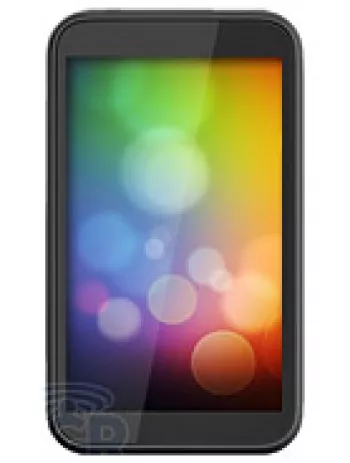
Introduction to HTC Desire 610
The HTC Desire 610 launched in February 2014, represents a solid mid-range smartphone option from HTC, offering a blend of performance and design. Though now discontinued, it was released in May 2014 and has been acknowledged for its robust features at a competitive price.
Design and Build
The HTC Desire 610 is crafted with dimensions of 143.1 x 70.5 x 9.6 mm, making it feel quite ergonomic and comfortable in hand. Weighing 143.5 grams, it is fairly light, and its design encompasses a plastic body, which was quite standard at the time of its release. It was available in a variety of colors including Black, White, Red, Gray, and Green, catering to diverse personal preferences.
Display Characteristics
The device features a 4.7-inch IPS LCD display with a resolution of 540 x 960 pixels, resulting in a pixel density of approximately 234 ppi. While it may not match the full HD displays of flagship models, its screen-to-body ratio of around 60.4% provides decent viewing experiences for multimedia consumption.
Hardware and Performance
Processor and Graphics
Powered by the Qualcomm Snapdragon 400 chipset built on a 28 nm process, the HTC Desire 610 houses a quad-core 1.2 GHz Cortex-A7 CPU paired with the Adreno 305 GPU. This combination ensures smooth navigational performance and graphics processing for everyday tasks and basic gaming needs.
Memory and Storage
With 1GB of RAM and 8GB of internal storage, the device provides average multi-tasking capabilities. However, storage can be expanded via a dedicated microSDXC slot, allowing users to store additional apps, photos, and media.
Camera Capabilities
Main Camera
The main camera on the HTC Desire 610 is an 8 MP sensor with autofocus. It boasts features such as LED flash and HDR mode, allowing for brighter and more dynamic photographs even in challenging lighting conditions. Video recording is possible at 1080p@30fps, which is quite impressive for a smartphone of this tier.
Selfie Camera
The front camera is a 1.3 MP shooter that can handle video recording at 720p, making it suitable for video calls and basic selfies.
Software and User Interface
The HTC Desire 610 runs on Android 4.4.2 KitKat, layered with HTC’s Sense UI 5.5. This custom UI overlay offers various enhancements over stock Android that contribute to an intuitive user experience with added personalization options.
Connectivity and Sensors
The device supports GSM, HSPA, and LTE networks, ensuring broad compatibility with various carriers and faster internet speeds. Standard connectivity options include Wi-Fi 802.11 b/g/n, Bluetooth 4.0 with A2DP, and aptX for wireless audio streaming. Positioning systems such as GPS and GLONASS allow for accurate location services.
The inclusion of NFC is market and operator-dependent, but the device certainly benefits from having FM radio functionality and microUSB 2.0 support for charging and data transfer. Basic sensor support includes an accelerometer and proximity sensor.
Audio and Multimedia
Enjoyment of music and media is augmented by stereo speakers, which provide a robust audio output, alongside a 3.5mm headphone jack offering traditional wired audio connectivity.
Battery Life
The non-removable Li-Po 2040 mAh battery offers reasonable endurance with up to 650 hours of standby time on a 3G network and up to 16 hours of talk time. This longevity ensures most users could easily get through a day of typical use without needing a recharge.
Price and Availability
When initially released, the HTC Desire 610 was priced at about 200 EUR, providing a budget-friendly option for consumers seeking a balance of features and performance.
Conclusion
The HTC Desire 610 might not compete with today's high-end smartphones, but in its time, it was a commendable option for those looking for a dependable mid-range device. Its balanced combination of performance, build quality, and affordability made it a popular choice among users seeking essential smartphone capabilities without breaking the bank.
Key Features of HTC Desire 610
- Supports multiple network technologies including GSM, HSPA, and LTE for versatile connectivity.
- Equipped with a 4.7-inch IPS LCD display providing a clear and vibrant viewing experience.
- Packed with a Qualcomm Snapdragon 400 chipset and a Quad-core 1.2 GHz Cortex-A7 CPU for reliable performance.
- Expandable storage via microSDXC card slot allowing for additional memory capacity.
- Main camera features an 8 MP shooter with autofocus, LED flash, and HDR capabilities for better photos.
- Offers stereo speakers and a 3.5mm jack for enhanced audio experiences.
- Connectivity options include Wi-Fi, Bluetooth 4.0 with aptX, GPS/GLONASS, and microUSB 2.0.
- Features sensors like accelerometer and proximity for improved user interaction.
- Non-removable 2040 mAh battery providing reasonable standby and talk time.
- Available in multiple color options: Black, White, Red, Gray, and Green.
HTC Desire 610 Disadvantages
- Low display resolution at 540 x 960 pixels, which results in a pixel density of only ~234 PPI.
- Limited internal storage of 8GB, potentially challenging for users who need more space for apps and media.
- Only 1GB of RAM, which may hinder multitasking and performance with modern apps.
- Outdated operating system (Android 4.4.2 KitKat), lacking newer features and security updates.
- Basic selfie camera with only 1.3 MP resolution, delivering low-quality selfies.
- Non-removable battery, which limits the user's ability to replace it independently.
- Discontinued model, making it difficult to find support or spare parts.


View Also
More Phones
All Rights Reserved +14266 Phones © Mobilawy 2025

























